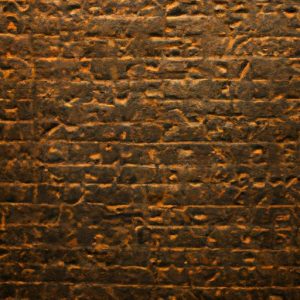Have you ever wondered if your favorite gel pen will eventually harden and become unusable? Writing gel pens have gained immense popularity due to their smooth ink flow and vibrant colors. But the question remains, does writing gel harden over time? Today, I’ll unravel the truth behind this common concern and debunk any misconceptions you might have about gel pen hardening.
Writing gel, also known as gel ink, is a unique type of ink that combines the best qualities of both ballpoint and rollerball pens. Its gel-like consistency allows for effortless writing, creating crisp lines without exerting excessive pressure. Gel pens have become a go-to choice for professionals, artists, and students alike, thanks to their versatility and appealing aesthetics.
Now, let’s address the burning question: does writing gel harden? The answer is both yes and no. While gel pen ink can dry out if left uncapped or exposed to air for an extended period, it doesn’t necessarily harden like cement or concrete. The gel ink’s composition contains solvents, pigments, and water, which evaporate over time. This evaporation can lead to ink clogs and reduced ink flow, giving the impression of hardened gel.
However, it’s important to note that not all gel pens are created equal. The quality of the ink and the pen itself play a significant role in determining whether gel ink hardens. High-quality gel pens often feature advanced ink formulations that resist drying out, ensuring a longer lifespan. Additionally, the design and construction of the pen’s tip and ink delivery system can influence the ink’s longevity and prevent premature hardening.
In the upcoming sections, we will explore the various factors that contribute to gel hardening, debunk common misconceptions surrounding this issue, and provide you with practical tips to prevent gel pen ink from drying out. So, let’s dive in and discover the truth behind gel pen hardening, separating fact from fiction. Stay tuned!
Understanding Writing Gel
Definition and Characteristics of Writing Gel
Writing gel, also referred to as gel ink, is a type of ink that possesses a gel-like consistency. This unique ink blend combines the properties of ballpoint and rollerball pens, resulting in a smooth and effortless writing experience. Gel ink is typically water-based and contains a pigment suspended in a gelatinous substance.
Unlike traditional ballpoint pens, gel pens use a rolling ball mechanism that dispenses the ink onto the paper. This ball is typically made of tungsten carbide, ensuring durability and consistent ink flow. The gel ink’s viscosity allows it to flow smoothly onto the paper, resulting in clean and vibrant lines.
Purposes and Advantages of Using Writing Gel
Writing gel pens have gained popularity for several reasons. Firstly, their smooth ink flow and reduced friction make writing with gel pens a delight. The gel ink glides effortlessly across the page, requiring minimal pressure. This feature is particularly beneficial for individuals who write for extended periods, as it reduces hand fatigue.
Moreover, gel pens offer a wide range of colors, allowing for creative expression in various contexts. Whether you’re taking notes, creating artwork, or highlighting important information, gel pens provide a vibrant and visually appealing result. The pigments used in gel ink often result in more saturated and vivid colors compared to other types of ink.
Additionally, the gel ink’s quick-drying properties are highly advantageous, especially for left-handed individuals. Gel pens tend to dry faster than other types of ink, minimizing the risk of smudging or smearing. This quality makes them ideal for tasks that require precise and neat writing, such as signing documents or completing forms.
In summary, writing gel pens offer a superior writing experience characterized by smooth ink flow, vibrant colors, and quick-drying properties. Understanding the unique characteristics and advantages of gel ink sets the foundation for exploring the factors that contribute to gel hardening. Let’s delve deeper into this intriguing topic and uncover the truth about gel pen hardening.
Factors Affecting Gel Hardening
When it comes to gel pen ink, several factors can contribute to its potential hardening. Understanding these factors will help you take proper precautions to maintain the quality and longevity of your gel pens. Let’s explore the key influencers behind gel hardening:
External Influences on Gel Hardening
1. Temperature: Extreme temperatures can accelerate the drying process of gel ink. High temperatures cause the solvents in the ink to evaporate rapidly, leading to ink clogs and reduced ink flow. On the other hand, freezing temperatures can cause gel ink to thicken, making it difficult to write smoothly.
2. Humidity: Humidity levels in the environment can affect gel pen ink as well. High humidity can introduce moisture into the ink, altering its consistency and potentially causing smudging or ink bleeding. Conversely, low humidity levels can lead to faster evaporation of the ink’s moisture content.
3. Exposure to Air and Sunlight: Leaving gel pens uncapped for extended periods or exposing them to air and sunlight can accelerate ink drying. The ink’s solvents and water content evaporate when exposed to air, resulting in ink clogs and reduced ink flow. Sunlight can also cause the ink to fade and lose its vibrancy.
Impact of Gel Composition and Quality
The composition and quality of the gel ink itself play a significant role in determining its susceptibility to hardening. Gel pens with low-quality ink formulations or inadequate sealing mechanisms are more prone to drying out quickly. Cheaper gel pens may contain higher water content, making them more susceptible to evaporation and ink hardening.
On the other hand, high-quality gel pens often feature advanced ink formulations that resist drying out. These pens are designed to maintain a consistent ink flow, providing a smooth writing experience over an extended period. Investing in reputable brands known for their superior gel ink quality can greatly reduce the risk of ink hardening.
By understanding these factors that contribute to gel hardening, you can take proactive measures to protect your gel pens and ensure their long-lasting performance. In the next section, we will debunk common misconceptions surrounding gel hardening and shed light on the truth behind them. Stay tuned to separate fact from fiction!
Common Misconceptions about Gel Hardening
When it comes to gel pen hardening, there are several misconceptions that have been perpetuated over time. It’s time to debunk these myths and provide you with accurate information. Let’s separate fact from fiction:
Misconception 1: All Gel Pens Harden Quickly
Many people believe that all gel pens are prone to hardening and drying out rapidly. However, this is not entirely true. As mentioned earlier, the quality of the gel pen plays a crucial role in determining its susceptibility to hardening. High-quality gel pens are designed with advanced ink formulations that resist drying out, allowing for a longer lifespan and reducing the risk of ink hardening. So, don’t be discouraged from using gel pens based on this misconception alone.
Misconception 2: Gel Pens Can’t Be Revived Once They Harden
Another common myth surrounding gel pen hardening is that once the ink hardens, there’s no way to revive it. While it’s true that completely dried-out gel ink may be challenging to revive, there are several techniques you can try before giving up on your favorite pen. Simple methods like gently shaking the pen or running the tip under warm water can sometimes help loosen up the dried ink and restore the flow. Additionally, using specialized ink-reviving solutions or storing the pen upside down for a while might also do the trick. So, don’t lose hope just yet if you encounter a hardened gel pen.
Misconception 3: Gel Pens Always Harden Due to Poor Quality
There’s a misconception that gel pens harden solely due to poor quality or cheap manufacturing. While it’s true that low-quality gel pens may have a higher likelihood of drying out quickly, it’s not the only factor at play. External influences such as exposure to air, temperature fluctuations, and improper storage can also contribute to gel pen hardening. By understanding and implementing proper storage techniques, you can extend the life of your gel pens, regardless of their initial quality.
By debunking these common misconceptions, you can now approach gel pen hardening with a clearer understanding. Remember, not all gel pens are created equal, and proper care and storage can significantly impact their longevity. In the next section, we will delve into practical tips to prevent gel pen hardening and ensure your writing experience remains smooth and enjoyable. So, let’s continue our journey!
Preventing Gel Hardening
Practical Tips to Keep Your Gel Pen Ink Flowing
To ensure your gel pen ink remains smooth and vibrant, follow these practical tips and techniques to prevent gel hardening:
1. Cap it, Don’t Leave it!
One of the primary causes of gel pen ink drying out is leaving the pen uncapped for an extended period. Make it a habit to cap your gel pen immediately after use, even if it’s just for a short break. By sealing the pen, you minimize exposure to air, reducing the risk of ink evaporation and potential hardening.
2. Store it Right
Proper storage is crucial for maintaining gel pen quality. When not in use, store your gel pens horizontally or with the tip facing downwards. This ensures that the ink remains in contact with the pen’s ball or tip, preventing clogs and facilitating smooth ink flow when you’re ready to write or draw.
3. Keep it Cool and Dry
Extreme temperatures and humidity can impact gel pen ink quality. Avoid exposing your gel pens to direct sunlight, as the heat can accelerate ink evaporation. Similarly, avoid storing them in overly humid environments, as moisture can affect the ink’s consistency. Keep your gel pens in a cool, dry place to preserve their performance.
Recommended Gel Pen Brands for Longevity
While gel pen hardening can be a concern, certain pen brands or types are known for their resistance to ink drying. Consider investing in gel pens from reputable brands that prioritize ink quality and longevity. Some popular brands to explore include:
1. Sakura Gelly Roll
Sakura Gelly Roll pens are renowned for their archival-quality gel ink, designed to resist drying and produce consistent, vibrant lines. These pens come in a variety of colors and tip sizes, catering to different artistic and writing needs.
2. Uni-ball Signo
Uni-ball Signo gel pens feature a unique gel ink formulation that offers excellent resistance to drying out. These pens deliver smooth, skip-free writing and are available in various tip sizes, from fine to bold, to suit your preferences.
By following these practical tips and considering gel pen brands known for their ink quality, you can prolong the lifespan of your gel pens and prevent the frustration of dried-out ink. Now, let’s move on to the final section and wrap up our exploration of gel pen hardening.
Conclusion
After a thorough exploration of the question “Does writing gel harden?” we have come to a definitive conclusion. While gel pen ink can dry out over time, leading to reduced ink flow and clogs, it does not harden in the traditional sense. The gel ink’s composition and the quality of the pen itself play crucial roles in determining the longevity of the ink.
To ensure that your gel pen ink remains smooth and vibrant, it is essential to take proper care and follow some preventive measures. Always recap your gel pen after use to prevent excessive exposure to air, which can accelerate ink evaporation. Store your gel pens in a cool, dry place away from direct sunlight, as heat and light can affect the ink’s consistency.
Investing in high-quality gel pens can also make a significant difference. Look for pens that boast advanced ink formulations and reliable ink delivery systems to minimize the risk of ink drying out. Some brands even offer specially designed caps or mechanisms to prevent drying and extend the life of the ink.
Remember, prevention is key. By adopting these simple practices, you can enjoy your gel pens for a long time without worrying about ink hardening. So, keep writing, sketching, and expressing your creativity with confidence, knowing that your gel pens will continue to deliver the smooth and vibrant results you love.
In conclusion, while gel pen ink may dry out with time, causing reduced ink flow, it doesn’t harden like concrete. By understanding the factors that contribute to gel hardening and implementing preventive measures, you can prolong the lifespan of your gel pens and enjoy their benefits for an extended period. So, keep those gel pens handy and let your words and creativity flow effortlessly. Happy writing!





